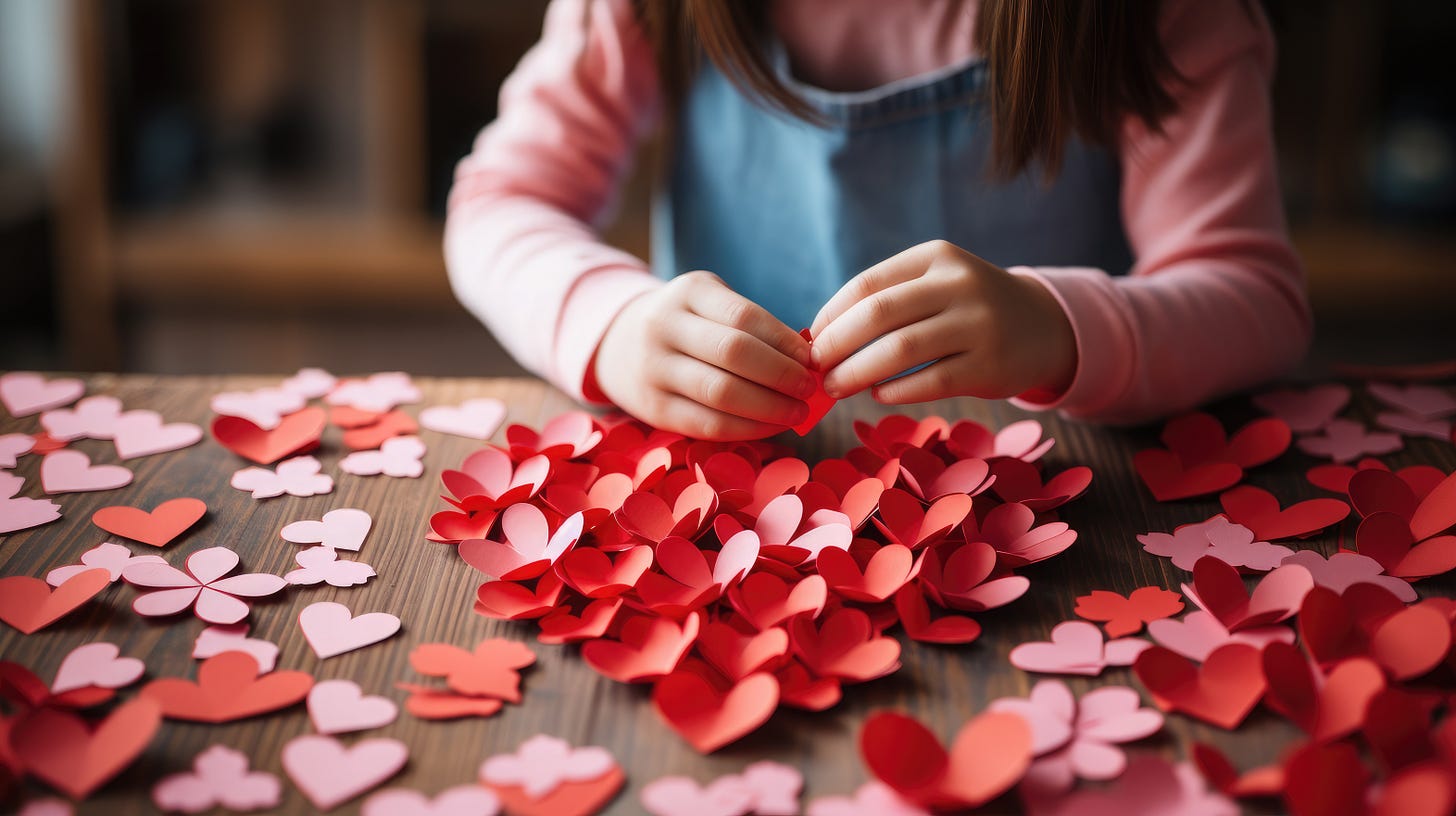Five Unfortunate Lessons Valentine's Day Teaches Kids
And prompts to challenge its pernicious messages.
I wasn’t going to write a Valentine’s Day post this year. I really wasn’t. But as I’ve observed my son’s and daughter’s preparations over the past few weeks, I have been shocked by how differently they conceive of and engage with the holiday. From the time they’re very little, kids absorb highly gendered messages from the cultural fanfare leading up to Valentine’s Day, and many of these messages are not helpful.
There are, of course, many reasons to hate on Valentine’s Day and I’m not going to get into all of them here. (There are also reasons to like it! I’m all in favor of celebrating love and affection.) But I do want to highlight a few that are specifically relevant to parents and kids — not so you can feel hopeless and sad, but because awareness is the first step to action.
The trouble with gender stereotypes is that they’re often so insidious we don’t even notice them. They just start to feel like… I don’t know, the way things are. When we actually start to see them and recognize their dangerous messages, they become easier to question and push against.
The same goes for our kids. If we can help them become aware of the ways in which the world is trying to control them through gender norms and stereotypes, we help them take the first step towards embracing something better.
I’ve said it before and I’ll say it again: Parenting is a form of activism. We can change the world based on how we raise our kids. Sometimes, all it takes is a few well-timed questions to get kids to start seeing things differently. Today I’m going to share five unfortunate lessons that Valentine’s Day teaches kids — and, for each one, provide a few specific questions you can use with your kids to get them to consider the implications themselves.
Valentine’s Day teaches kids that boys and girls are fundamentally different.
When I was at Walmart a couple of weeks ago hunting for craft supplies for my daughter, I marveled at how gendered the prepackaged kids’ cards were. The cards that were clearly intended for boys featured superheroes or sports themes on a blue or black background; the cards for girls donned unicorns and hearts on a pink or red backdrop. Of course, boys can use girls’ valentines and vice versa, and yes, there were also some gender neutral options available. But the vast majority of the options seem specifically tailored to gender, highlighting for kids the so-called differences between boys and girls rather than the things we all have in common.
Gender stereotypes don’t do anything good for kids. Boys who develop strong gender stereotypical beliefs have less interest in school, lower standardized test scores and an increased risk for depression, compared with other boys. Girls with more stereotypical beliefs get worse grades, behave in more sexualized ways and worry more about their appearance, compared with other girls.
Valentine’s Day is just one day, but its messages permeate our culture for at least six weeks, reinforcing stereotypes that can ultimately cause harm.
How do we push against this? It’s as easy as making simple observations in front of your child and then asking them for their thoughts, and using what they say as a springboard for a discussion on what society expects of girls versus boys. For instance, when you’re going through your kids’ class valentines, you could say:
I notice that many of the boys have superheroes and sports on their cards, while girls have cute animals. Why do you think that is?
I wonder if boys feel comfortable giving out unicorn-themed valentines. What do you think?
Did the boys in your class celebrate Valentine’s Day in a different way than the girls did? Why do you think that is?
(Yes, these questions also emphasize gender — but in the service of getting kids to think about gender norms, why they exist, and whether they are fair and accurate.)




